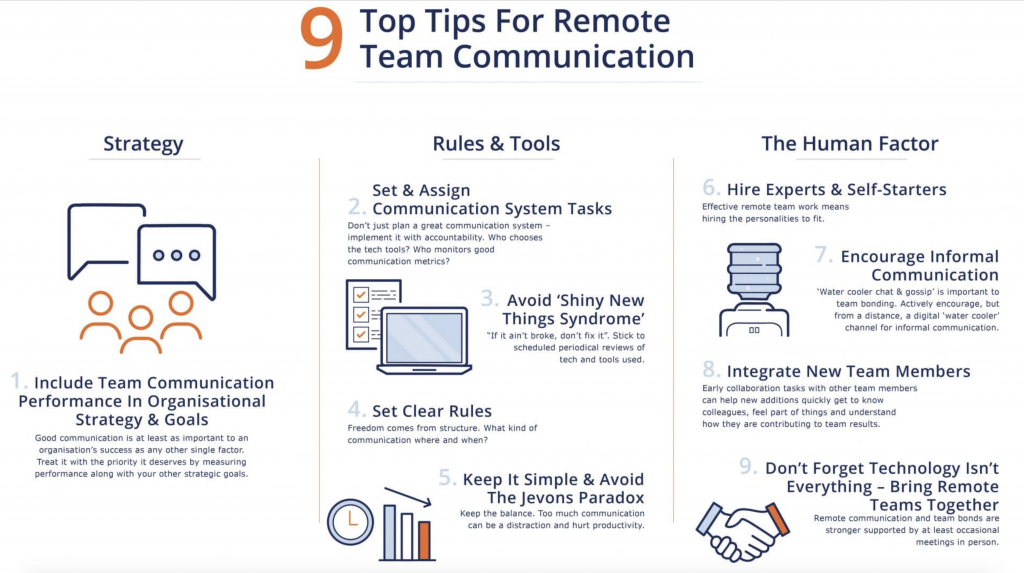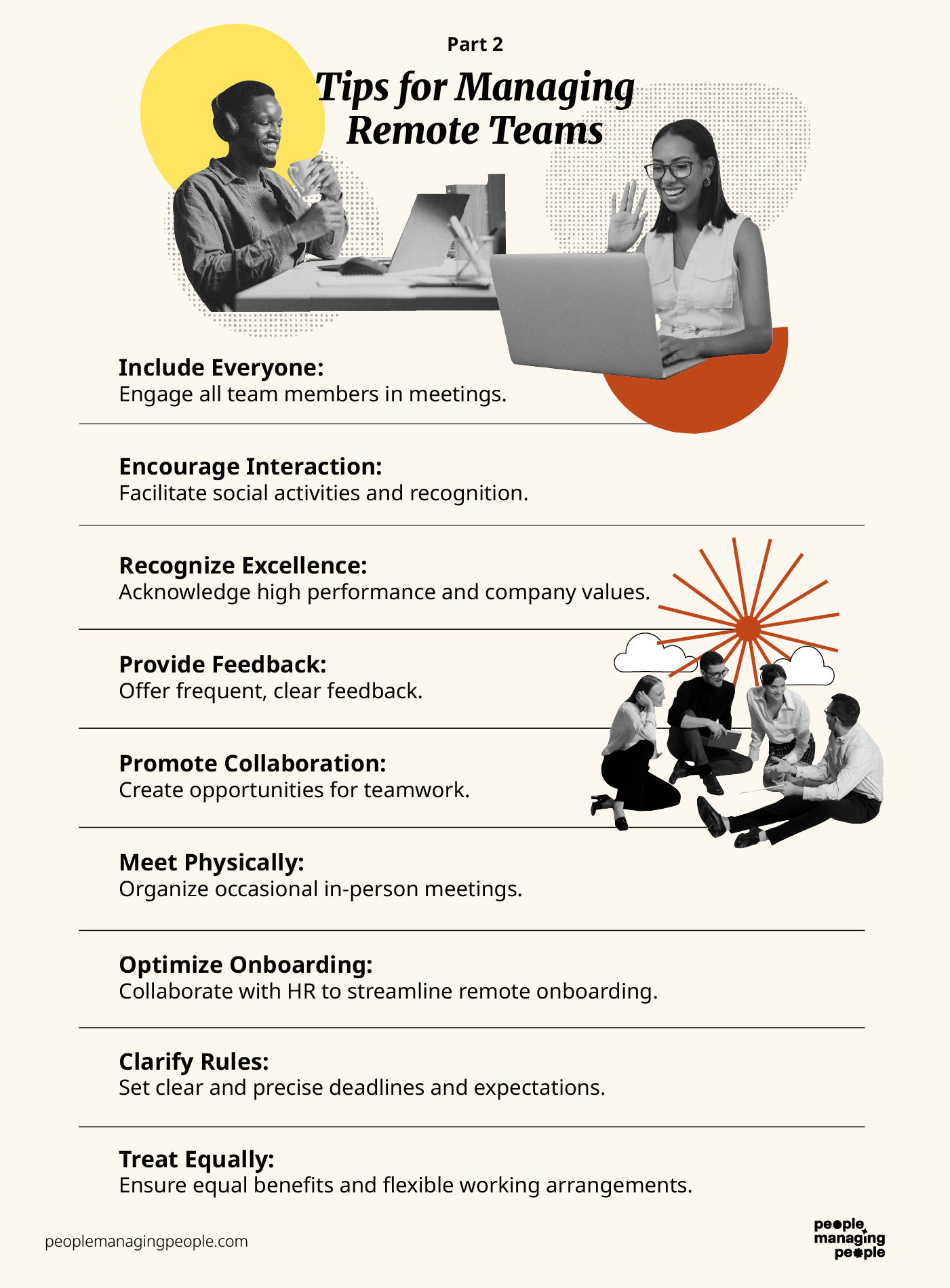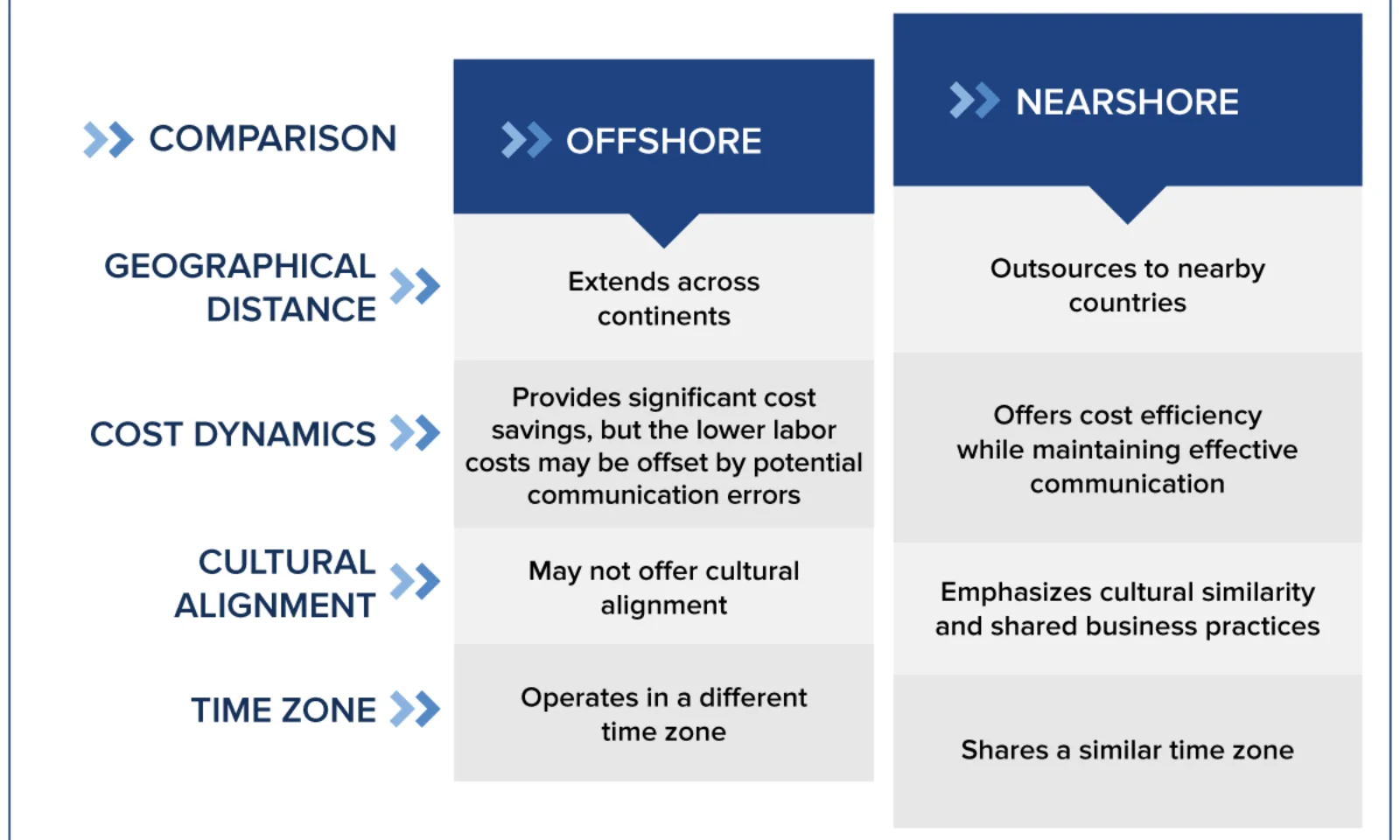Picture this: A tech manager in Austin opens her laptop as the sun rises. Her development team in Mexico City will begin their workday shortly. In Chicago, a product owner reviews the day’s achievements while his engineering team in Buenos Aires pushes toward their sprint goals. This exemplifies the evolving landscape of nearshore team dynamics in 2025.
Geographic proximity and cultural alignment have emerged as key drivers in modern distributed team operations. Traditional management frameworks are being redefined. Consider this: recent industry analyses reveal that while 78% of organizations have adopted nearshore partnerships, only 23% have mastered their management strategies.
What distinguishes high-performing nearshore collaborations from underperforming ones? The answer lies at the intersection of meaningful relationships and strategic technology adoption. As demonstrated by leading organizations, successful nearshore leadership in 2025 extends beyond collaborative tools. It requires deep integration of cultural intelligence, time zone optimization, and distributed team psychology.
Let’s explore proven methodologies from organizations that have mastered nearshore team operations. You’ll discover how industry giants like Microsoft and IBM have adapted their processes for enhanced nearshore effectiveness. Case studies highlight teams achieving 45% productivity gains through strategic management innovations.
The following insights will revolutionize your approach to nearshore team leadership. Each chapter delivers research-backed, implementable solutions drawn from real-world scenarios. Whether you’re beginning your nearshore journey or enhancing existing operations, you’ll find strategic foresight for overcoming common obstacles.
Ready to elevate your nearshore team management expertise? Let’s delve into the core principles.
Best Practices for Remote Team Collaboration in 2025
- Strategic scheduling leverages global time zones.
- Immersive connectivity strengthens team bonds.
- Outcome-focused frameworks drive excellence.
Establishing Communication Norms
Let’s explore how effective communication serves as the cornerstone of distributed teams. Consider this: well-defined communication protocols create the foundation for seamless collaboration.

Strategic syncs transform team dynamics. Picture this: regular touchpoints that keep everyone aligned and engaged. Key differences in work schedules across time zones often create communication gaps. Real-world scenarios show that focused weekly sessions drive results. A concentrated 30-minute sync can revolutionize team alignment. For example, Zapier’s implementation of this approach has demonstrated remarkable improvements in team cohesion.
Digital ecosystem tools like Slack and Microsoft Teams revolutionize team interactions. As demonstrated by successful remote-first companies, these platforms facilitate robust idea exchange and documentation. Have you ever thought about how these tools integrate file management, instant communication, and video conferencing? Breaking down communication into project-specific channels enhances focus. Strategic foresight in tool selection matters – avoiding digital overwhelm through balanced adoption proves crucial.
Growth-driven feedback catalyzes continuous evolution. Long-term success depends on constructive feedback loops that nurture professional development and optimize workflows. Case studies show teams embracing feedback consistently outperform their peers. Highlighting Google’s approach illustrates how feedback-rich environments foster innovation and excellence. Projected growth accelerates when real-time feedback becomes cultural DNA.
Action Items
- Institute strategic weekly alignments.
- Deploy communication platforms strategically.
- Implement structured feedback mechanisms.
Myth: Remote teams lack consistent communication. Truth: Structured approaches enable superior communication patterns.
Building Trust Across Borders
Trust emerges as the cornerstone of high-performing remote teams. Future trends reveal proven strategies for cultivating deep trust across virtual boundaries.
Immersive experiences bridge cultural divides through shared moments. Anticipated developments in virtual team building create meaningful connections. These touchpoints forge lasting bonds. Buffer’s virtual retreat program exemplifies how distributed teams can build strong cultural foundations through intentional connection.
Authentic sharing enriches the professional landscape. Team members sharing life milestones creates genuine human connections. These moments transform colleagues into trusted allies. Understanding a teammate’s passion project or celebrating their personal achievements strengthens professional relationships.
Performance clarity drives accountability. High-performing teams thrive on well-defined roles and expectations. This precision eliminates ambiguity and establishes accountability frameworks. Illustrated by Trello’s success, role clarity enables distributed teams to maximize individual and collective potential.
Action Items
- Design quarterly virtual engagement initiatives.
- Create platforms for personal connection.
- Establish clear performance frameworks.
Myth: Virtual teams can’t develop authentic trust. Truth: Intentional connection strategies build robust trust virtually.
Other Perspectives: Pros and Cons
Advantages of Nearshore Collaborations:
– Geographic efficiency optimizes travel and operational costs versus offshore models.
– Cultural alignment enhances communication effectiveness.
Disadvantages of Nearshore Collaborations:
– Regional dependencies impact resource availability and economics.
– Talent constraints in specialized skill domains compared to global markets.
56% of organizations recognize nearshoring’s geographical and cultural benefits.
Strategic Perspectives:
– Some thought leaders advocate structured flexibility parameters.
– Alternative viewpoints suggest excessive flexibility compromises output.
Further Exploration:
Delving into the realities of nearshoring reveals nuanced insights about implementation complexities.
Suggestions
A comprehensive understanding of diverse perspectives enhances collaboration strategies. Engage industry experts and analyze nearshoring case studies to expand strategic insight.

This framework establishes the foundation for advanced communication strategies in nearshore team leadership.
Before we dive deeper into best practices for managing nearshore teams, it’s worth noting that this builds on some key principles of nearshore development team management. If you’re just getting started with nearshore development teams or want to refresh your understanding, our comprehensive guide on Understanding Nearshore Development Teams will give you the groundwork you need. For those already familiar, let’s continue exploring best practices for managing nearshore teams…
Nearshore Team Communication Strategies: Tips for Success
- Leverage cultural alignment for enhanced collaboration
- Implement multilingual solutions for seamless interaction
- Structure meetings for maximum impact and efficiency
Let’s explore the fundamentals of nearshore operations. Nearshoring involves partnering with teams in neighboring countries, offering advantages like time zone compatibility and shared cultural understanding. This approach proves particularly valuable for projects demanding real-time collaboration and swift delivery cycles.
Harness Cultural Alignment to Strengthen Team Dynamics
Consider this: cultural intelligence forms the cornerstone of successful nearshore partnerships. By recognizing shared values and traditions, teams naturally develop stronger bonds. Picture this: Hofstede’s cultural dimensions framework illustrates how factors like power distance and uncertainty avoidance shape workplace interactions. Investing time in cultural exchange activities creates an environment where innovation thrives and misalignments diminish.

For a deeper understanding, explore “Cultures and Organizations: Software of the Mind” by Gert Jan Hofstede, highlighting key cultural dimensions. Case studies from industry leaders demonstrate real-world scenarios of successful cross-cultural collaboration. Strategic foresight suggests looking beyond surface-level differences to embrace fundamental values, regulatory frameworks, and societal norms that shape business practices.
Deploy Multilingual Solutions to Enhance Communication
Leveraging bilingual expertise and advanced language tools creates seamless communication channels. Key differences emerge when comparing various translation approaches. For example, while automated tools offer convenience, specialized translation platforms deliver superior accuracy for critical documentation. Future trends point toward integrated learning platforms like Duolingo or Rosetta Stone for continuous team development.
As demonstrated by successful multinational teams, effective communication transcends literal translation. “The Art of Communicating” by Thich Nhat Hanh breakdown shows how non-verbal elements and active listening techniques contribute to meaningful exchanges. Anticipated developments in communication technology promise to further bridge linguistic gaps.
Optimize Meeting Efficiency Through Strategic Planning
Meeting effectiveness hinges on precision and focus. Have you ever thought about implementing Jeff Bezos’s “No PowerPoint” principle? This approach emphasizes concise, impactful communication. Projected growth in remote collaboration necessitates structured agendas that prioritize essential discussions and decisive outcomes.
“Essentialism: The Disciplined Pursuit of Less” by Greg McKeown illustrates the advantages of strategic prioritization. Real-world scenarios demonstrate how advance preparation and inclusive participation policies drive productive discussions. Long-term success depends on maintaining this disciplined approach to meeting management.
Refining Communication Approaches
Incorporate Regional Practices into Team Interaction
Highlighting local customs enriches team dynamics significantly. The strategic foresight of adapting communication styles to regional preferences demonstrates cultural intelligence. For instance, some cultures value explicit communication while others prefer contextual understanding. This awareness shapes more effective cross-cultural exchanges.
“When Cultures Collide: Leading Across Cultures” by Richard D. Lewis offers concrete insights into navigating cultural nuances. Case studies of international negotiations provide practical examples of successful adaptation strategies. The comparison between different communication approaches reveals opportunities for meaningful connection.
Strategic Implementation of Humor in Cross-Cultural Settings
Humor represents both opportunity and challenge in international teams. The breakdown of successful cross-cultural humor shows that universally relatable content works best. Anticipated developments in team dynamics suggest gradually introducing more nuanced forms of humor as relationships strengthen.
For deeper insights, “The Humor Code: A Global Search for What Makes Things Funny” by Peter McGraw presents a scientific analysis of cross-cultural humor. Key differences in humor appreciation across cultures guide appropriate usage in professional settings.
Establish Clear Protocols for Technical Language
Professional terminology requires careful management. Consider this: shared glossaries serve as living documents, evolving with team needs. Future trends indicate increasing importance of standardized technical vocabulary across international teams.
Regular updates ensure these resources remain relevant. “Lingo: Around Europe in Sixty Languages” by Gaston Dorren exemplifies the advantages of understanding linguistic diversity in professional settings.
Communication Enhancement Tools
Maximize Project Management Platform Benefits
Project management solutions like Asana or Trello demonstrate significant impact on team coordination. Strategic foresight in selecting and implementing these tools ensures optimal workflow management. Real-world scenarios show how these platforms enhance accountability and transparency.
“Scrum: The Art of Doing Twice the Work in Half the Time” by Jeff Sutherland highlights the advantages of agile methodology implementation. Case studies showcase successful integration of these tools in nearshore environments.
Implement Advanced Translation Solutions
Professional translation services offer crucial advantages in formal communication. Projected growth in multilingual business operations emphasizes the importance of accurate translation tools like DeepL. These solutions ensure precise communication of critical information.
“The Elements of Style” by Strunk and White provides foundational guidance for clear documentation. Long-term benefits include improved accuracy and reduced misunderstandings in formal communications.
Prioritize Video Communication for Complex Discussions
Video conferencing proves superior for nuanced conversations. The breakdown of communication effectiveness shows video calls facilitate better understanding through visual cues. Anticipated developments in virtual meeting technology promise enhanced collaboration capabilities.
“Reinventing Organizations” by Frederic Laloux illustrates the advantages of visual communication in modern team structures. Future trends suggest continued evolution of video conferencing platforms to better serve international teams.
Trends in Effective Cross-Border Team Management from Last Year
Leveraging AI for Resource Management
The landscape of cross-border team management witnessed a transformative AI evolution last year. Picture this: early in the year, breakthrough AI tools emerged, revolutionizing scheduling and resource allocation. Organizations embraced AI-driven systems that intelligently distributed tasks based on team bandwidth and project timelines.This strategic shift reduced manual coordination by eliminating scheduling conflicts. By mid-year, the projected growth in AI capabilities led to sophisticated predictive analytics, with companies reporting an impressive 30% efficiency boost through these innovations.
Let’s explore how analytics through AI reshaped performance tracking. Advanced algorithms now process comprehensive datasets, providing strategic foresight into team performance metrics. This breakthrough enables managers to identify top performers and growth opportunities with unprecedented precision. The anticipated developments in automation gained significant traction as the year progressed. Have you ever thought about the long-term impact of eliminating routine administrative tasks? Teams now channel their energy into high-value strategic initiatives. Looking ahead, the key differences in successful implementation will depend on thorough team training and seamless technology integration.
Emphasizing Asynchronous Communication
A breakdown of communication trends reveals a decisive shift toward asynchronous collaboration in managing nearshore teams. The year kicked off with innovative voice messaging platforms replacing traditional real-time interactions. Consider this: teams across different time zones now exchange information effortlessly, maximizing productivity within their preferred schedules. By March, case studies showed that nearly 50% of organizations had embraced these tools, highlighting a remarkable reduction in meeting frequency and enhanced schedule flexibility.
Future trends point toward structured timeline management as a cornerstone of distributed team success. The advantages of shared documentation became increasingly apparent as remote work evolved. For example, by mid-year, collaborative documents emerged as central hubs for continuous project updates, eliminating the need for simultaneous presence. As we look toward upcoming developments, organizations must focus on creating comprehensive guidelines for these communication tools, ensuring crystal-clear alignment with project objectives.
For a deeper understanding of enhancing communication, consider our Simple Guide: Start Your Nearshore Development Faster article.
Ensuring Enhanced Data Security Practices
The security landscape experienced significant reinforcement throughout 2024, with cross-border data protection taking center stage. Early year developments saw the implementation of advanced encryption protocols, particularly crucial for international data transfers under varying regulatory frameworks. By mid-year, illustrated by several high-profile security incidents, cybersecurity awareness surged, prompting substantial investments in comprehensive team training programs.
The year concluded with strategic integration of security measures into daily operations. These systematic approaches, encompassing robust firewall systems, advanced password protocols, and systematic security audits, became fundamental operational components. The anticipated developments in security practices will require continuous evolution. Highlighting the importance of staying ahead of emerging security technologies and regulatory changes remains crucial for protecting cross-border operations. Consider reading more about securing cross-border processes in our article on IT Staffing Solutions for additional insights.
Integrating Technology in Nearshore Teams for Future Growth
Virtual Reality in Meetings
Picture this: by 2025, Virtual Reality (VR) revolutionizes team interactions beyond traditional video calls. Consider this scenario – developers from Mexico City and project managers from New York collaborate in a shared virtual space, examining code architecture on floating 3D displays. For example, teams engage in virtual workshops where they manipulate product prototypes in real-time, accelerating the feedback cycle from days to minutes.
These immersive environments create powerful team-building opportunities. Let’s explore how virtual escape rooms and collaborative problem-solving exercises foster stronger connections across geographical boundaries. As demonstrated by successful implementations, teams report significantly improved communication and cultural understanding through these shared virtual experiences.
[Action Items]
– Implement immersive collaboration through Spatial or MeetinVR platforms.
– Establish virtual prototype review sessions each quarter.
– Develop comprehensive VR onboarding programs.
Myths
– Myth: VR implementation requires excessive capital.
– Truth: Strategic VR adoption generates substantial ROI through reduced travel expenses.
Advanced Cloud Solutions
The projected growth in cloud technology reshapes distributed team operations. Future trends point to sophisticated platforms surpassing basic storage solutions, with AWS and Azure leading the transformation through advanced integration capabilities and scalable infrastructure designed for evolving nearshore teams.
Strategic foresight in collaborative editing revolutionizes workflow efficiency. The key differences between traditional and real-time collaboration become evident in productivity metrics, with recent case studies showing a 40% boost in team output following the adoption of synchronized editing systems.
Long-term security considerations drive innovation in access management. Highlighting the importance of role-based security protocols, platforms like SharePoint demonstrate how enterprise-grade protection can coexist with seamless collaboration.
[Action Items]
– Deploy Microsoft Teams or Slack for comprehensive document management.
– Implement granular access control frameworks.
– Schedule regular security assessment cycles.
Myths
– Myth: Cloud platforms compromise data security.
– Truth: Enterprise-grade encryption ensures robust data protection.
Predictive Analytics in Project Management
Anticipated developments in predictive analytics reveal transformative potential for project outcomes. The breakdown of historical data enables organizations to forecast challenges and optimize resource allocation, potentially reducing project timelines by 30%.
Machine learning applications demonstrate remarkable advantages in risk mitigation. Have you ever thought about how algorithms can identify project risks before they materialize? A strategic analysis of past performance patterns enables proactive problem-solving and resource optimization.
Real-world scenarios illustrate the practical benefits. A construction project’s strategic realignment through predictive modeling showcases how data-driven decisions enhance workflow efficiency and reduce operational overlap.
[Action Items]
– Leverage advanced visualization tools like Tableau or Power BI.
– Establish foundational machine learning training programs.
– Create data-driven strategy refinement protocols.
Myths
– Myth: Predictive modeling requires advanced expertise.
– Truth: Modern tools enable accessible data forecasting.
Where Cultures Converge for Success
Picture this: the landscape of remote work in 2025, where successful nearshore team management hinges on strategic foresight in communication, advanced technology adoption, and deep cultural awareness. The integration of AI-powered collaboration tools, immersive VR environments, and sophisticated cloud platforms is breaking down geographical barriers like never before. However, technological solutions represent just one piece of the puzzle.
Future trends indicate that thriving nearshore teams will prioritize authentic human connections. Consider this: structured video conferences, collaborative virtual team-building events, and intentional cultural exchange initiatives foster lasting trust. As demonstrated by industry leaders, teams achieving optimal performance master the delicate balance between synchronous and asynchronous communication methods.
Real-world scenarios of successful nearshore management highlight the advantages of combining flexibility with adaptability. Strategic leaders leverage predictive analytics while maintaining emotional intelligence, creating a powerful decision-making framework. They understand the key differences between scenarios that benefit from AI automation and those requiring personal touchpoints.
Let’s explore a practical approach: select one high-impact practice from each crucial area – communication protocols, technology integration, and cultural alignment. Implement these changes with your team over a focused two-week period, measuring concrete outcomes. Use this data-driven breakdown to inform your long-term strategy, incorporating additional practices based on your team’s specific dynamics. Remember, projected growth in nearshore success isn’t about chasing every emerging trend – it’s about identifying and implementing what genuinely drives your team’s productivity and engagement.